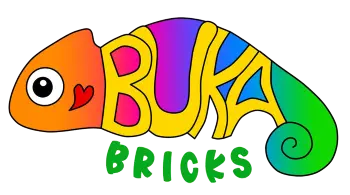If you follow the blog, you might remember my review of an alternative building blocks brand in October. It’s called FUNWHOLE, and it’s been appearing more and more on social media lately. They have such fun sets, such great designs. When they contacted me saying they want me to review the FUNWHOLE Bee Farm, I accepted happily.
My thoughts about the FUNWHOLE Newsstand were mostly positive. I deduced a few points for some parts being harder to connect, but overall, I really appreciated the amount of detail in such a small set. Therefore, I was very curious about the Bee Farm, more than twice as big in size. Who knew what gems were hidden inside? It didn’t disappoint. Just like the Newsstand, the FUNWHOLE Bee Farm is a beautiful set, full of many details.
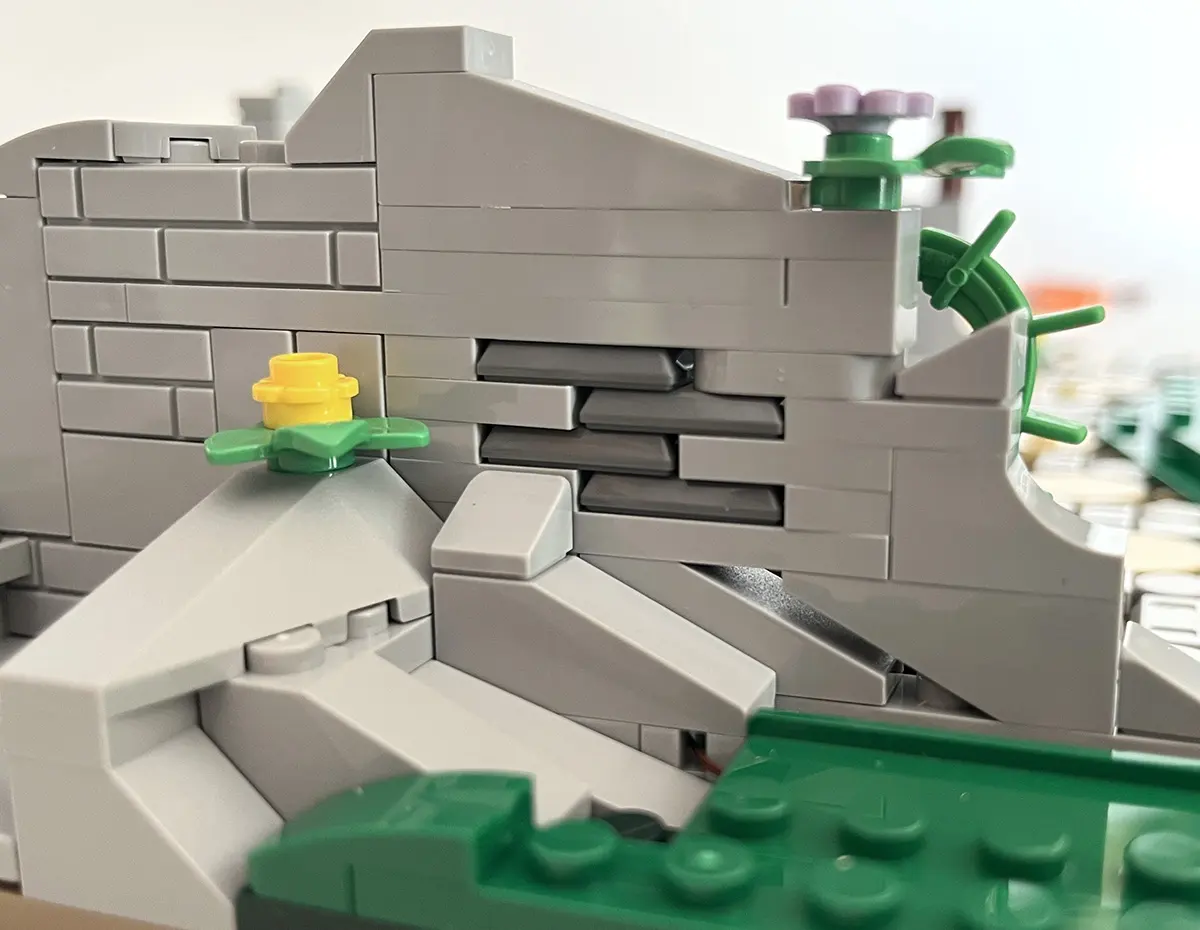
This set has been sent to me for reviewing purposes. However, that does not guarantee a positive review. I’ll try to be as objective as possible when sharing my thoughts with you.
The Box and Contents
The box is nicely designed. There are two instruction booklets, a smaller box holding the lighting parts and accessories, and numbered bags inside. At first, I didn’t understand why there were two instruction booklets. Sure, the set was big, but not that big. Then, as I was looking through the booklets, I realized they were designed for two people to build the set together. One builds the shed and the trees, the other builds the base. We’ve been seeing more LEGO sets with this feature, and I appreciate FUNWHOLE applying it to their set.
The small box containing the lighting parts also has a pair of tweezers and a small screwdriver in it. The screwdriver is for the switchbox, the tweezers are for holding the super thin cables. Honestly, this was a lifesaver for me. I’ve had my difficulties holding them in the previous set.
There’s also a bag labeled F along with numbered bags. Inside are the parts for the minifigures and the bear and other special parts.
FUNWHOLE Arı Çiftliği Seti
The FUNWHOLE Bee Farm
Like I said, the set consists of two main parts, the shed and the base. You build the base with the first three, and the shed and the trees with the remaining ones. Since I don’t have any knowledge on bee farms, I looked around the web for information, because some of the parts included made no sense to me, like the brush. I wondered if it was for the cat. It wasn’t. Apparently, if you have a bee farm, the bee brush is one of the most important pieces of equipment.
There are two building-like structures in FUNWHOLE Bee Farm. One is the shed, filled with shelves, equipment, jars, and an armchair so Rose (our beekeeper) can rest when she’s tired.
The other one is more like a working place, semi-open. There are tools and equipment here as well, nicely placed on the shelves. There’s also a honey extractor, a bee brush, a smoker, a bucket and a beehive. You can place the combs in the extractor and turn it, just like in real life.
The base is full of details as well. There are different types of hives, storage places for the honeycombs, and of course, lots of flowers and bees. The random placement of the flowers gives the surroundings a more natural look while creating a nice colorful contrast.
As for the trees… they’re thought and designed very well. I haven’t built many LEGO sets with trees in them, so I can’t really compare, but the trees in the FUNWHOLE Bee Farm set drove me a bit crazy. There are no problems when you’re building the leaves, but when you’re connecting them to the body, PLOP, the other leaf falls. You take it, try to put it back, PLOP, another one goes down. When you’re trying to make adjustments, PLOP PLOP PLOP… oh come on! I remember seeing it in a smaller LEGO set, there was another leaf piece used to connect the bigger ones. It prevents the big ones from coming off while preserving the organic look. I think it would’ve been better if they used a similar piece in bigger leaves like this. Everything’s fine as long as you don’t touch the trees, but if you want to turn them, the leaves tend to fall. However, I like the idea of being able to change where the big trees are placed using a railed system.
The Figures
There are two figures in the set, Rose, our beekeeper, and her nephew, Bubbles. According to the story, Bubbles lives in the city and shows a special interest in bees, so he keeps very close to them when he comes to his aunt’s bee farm – even if it means getting stung!
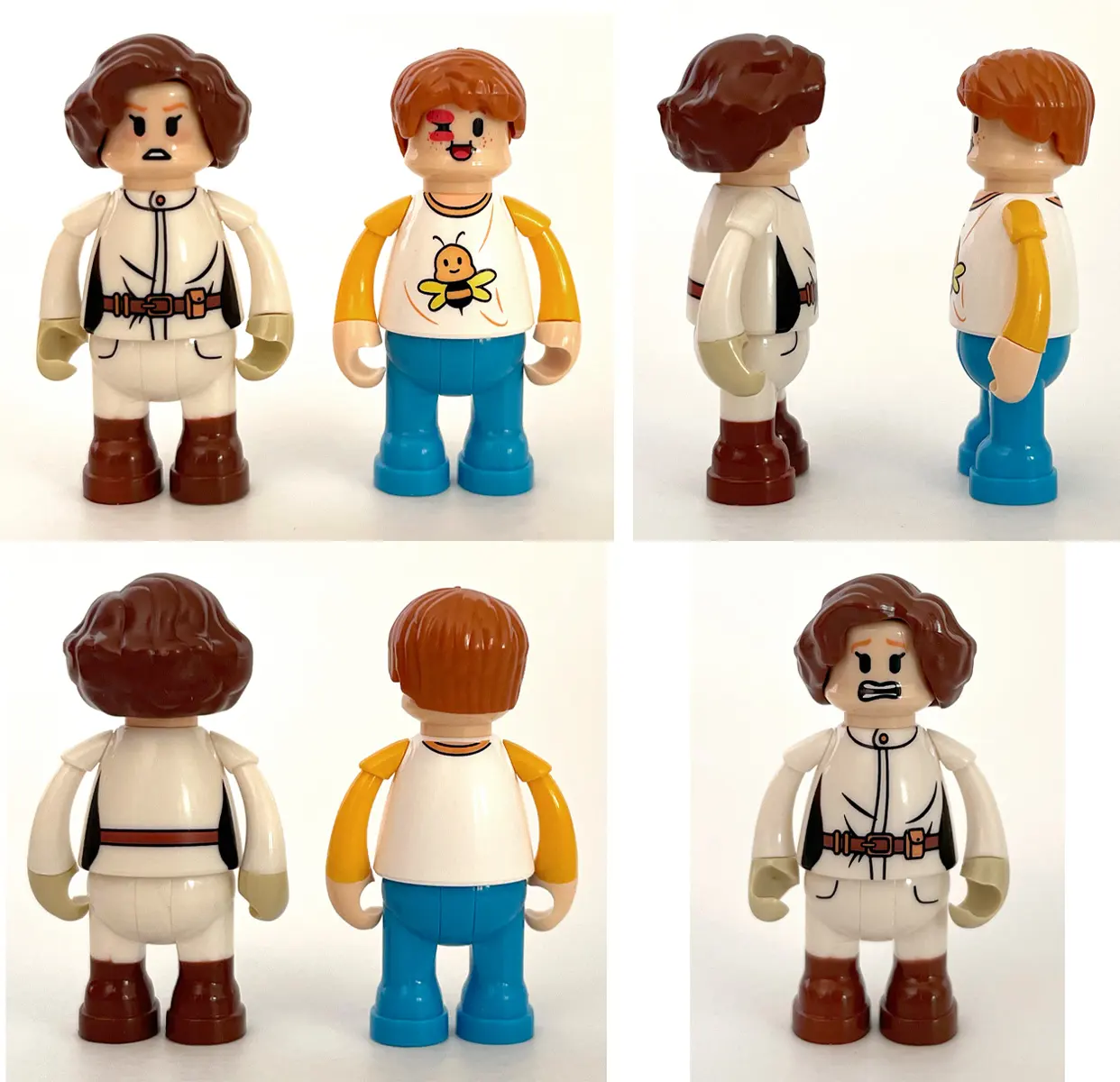
As someone who just started to like minidolls , accepting their differences and appreciating their diversity, I can’t not like the FUNWHOLE figures. They will never be at the same level as minifigures for me, but it has nothing to do with them not being LEGO. Minidolls will never be the same as minifigures, either. However, I love their chubby look and the fact that they add a different body type to the minifigures and minidolls. Design-wise, my thoughts on FUNWHOLE figures are mostly positive.

Photography-wise, they are very weak. Their feet are round, so unless they stand on a stud, it’s hard to pose them as if they’re running or walking. The angle of their arms prevents them from doing certain things. I tried to create a scene, a young boy being chased by a bear and his aunt panicking with her arms in the air, but she looks more like she’s trying to avoid impact with something. When you’re used to posing minifigures, FUNWHOLE figures seem challenging. They might look weird when holding an accessory, too. Very nice when they’re standing still, not so much when you try to pose them.
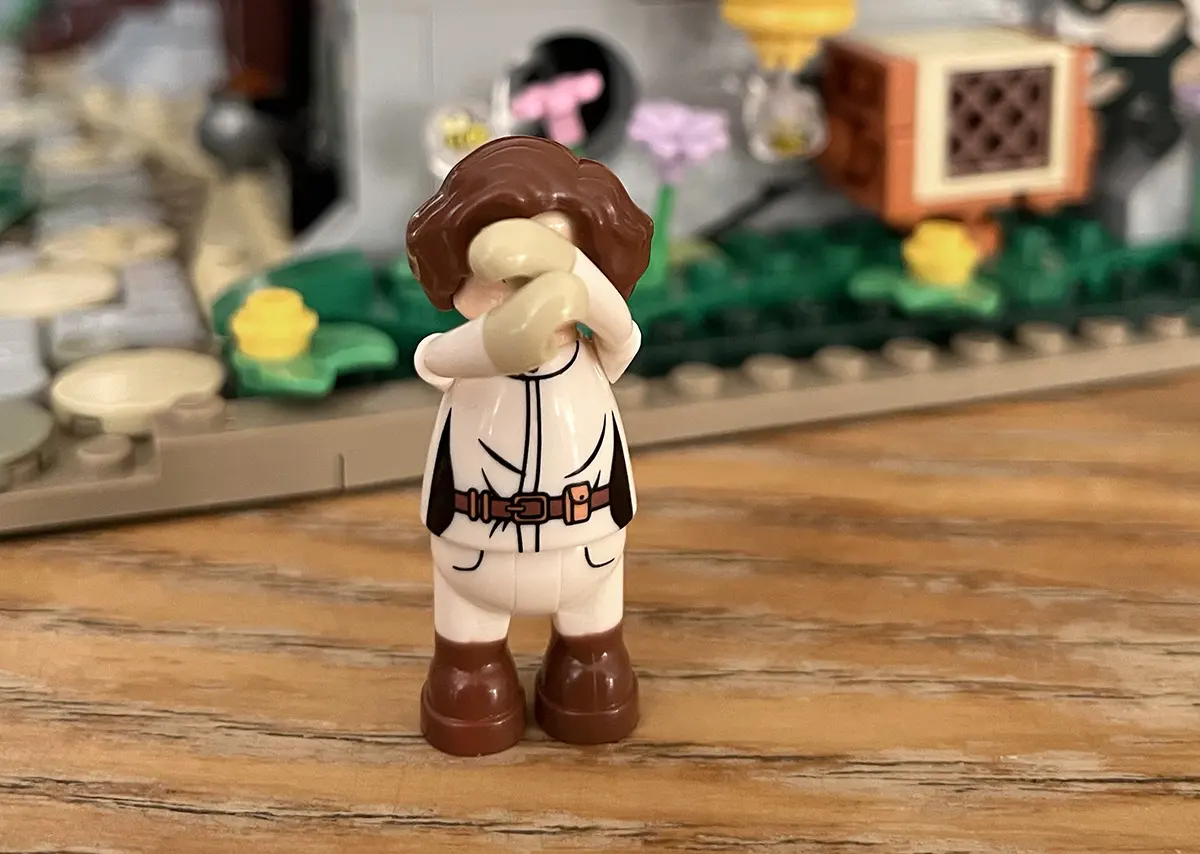
Another minus for me is the fact that you need to connect all their parts. The head, the hair, sure, we’re already used to that. But the hands to the arms, the arms to the torso, the legs to the belt… the pieces are very small, and you need to exert a certain amount of force for them to click. If you have ever taken apart the arms, the legs, even just the hands of minifigures, you know what I’m talking about. You start the set with aching fingers. It would’ve been better if the torso and the legs came assembled, in my opinion. On the other hand, including extras for these parts are a plus.
The Animals
What can you find on a bee farm? Bees, of course. We have three types of bees, one queen (she has a tiny crown), one winking and the other surprised. While everyone’s talking about the new LEGO bees being more realistic, I like the cartoon style more. What can I say, it’s my personal preference. I really liked the first printed bee tile, so I liked the FUNWHOLE bees as well. You place them around beehives, flowers, and so on. Some of them look like they’re flying around.
A black kitten, a white bird and a beige bear also come with the set. The bird is the only one without prints. There was an unprinted seagull in the Newsstand set. When the animals are unprinted, especially new ones, they feel like a statue or toy to me, I can’t see them as animals. But the kitten and the bear are printed. The kitten uses one of the oldest LEGO cat moulds, and the printing makes it look adorable.
The bear is probably the only thing that makes me uneasy in the FUNWHOLE Bee Farm set, quality-wise. The material used is different, not as shiny as the others and feels a bit thinner. It comes unassembled, and this results in the hinges not being as tight as they should be when they are assembled. When the arms & legs move easily, it leaves the impression of being cheap. I think if they change the material and make it pre-assembled, the result would be much better.

Lighting
The best part of FUNWHOLE sets is the lighting. There’s a special lighting system in all their sets, from the smallest to the biggest. You install them as you’re building the set, so it’s easier and the cables can be hidden. The cables aren’t seen in either of the sets I have, just like the switch parts. In the Newsstand, the switch was hidden in a compartment, in the Bee Farm it’s in the back.
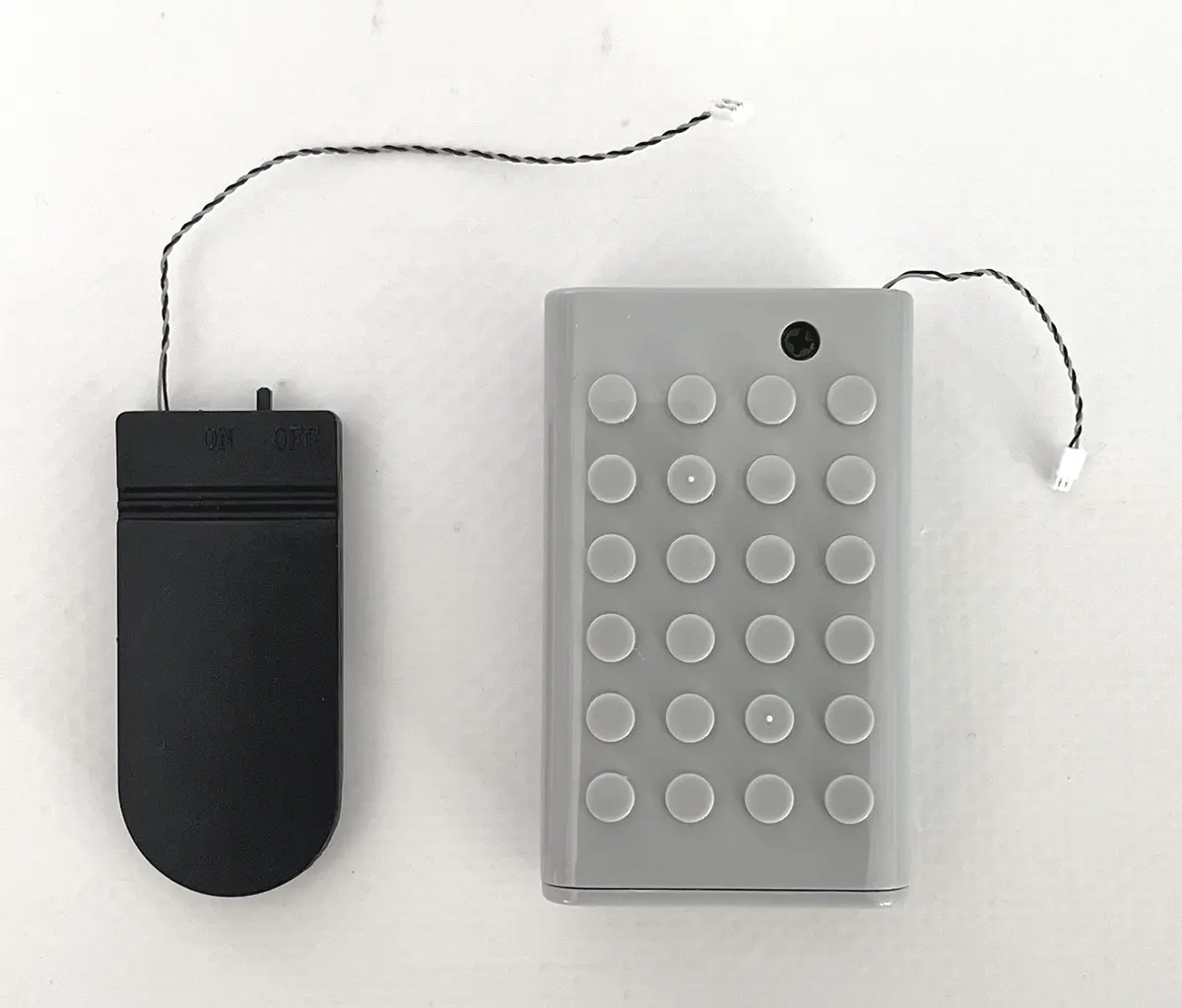
When it was time to put in the special lighting parts, I came across a lovely detail in the instruction booklet. A warning that says you should pay attention to the direction of the parts. I couldn’t help smiling. They could’ve easily written “Pinar, we’re talking to you” :) The special parts are designed so the cables don’t get pressed and damaged. Sometimes you close the part with a lid, sometimes the part is inserted above the cable. The dent underneath keeps the cable from getting damaged.
And once the set is finished, you turn on the lights for a beautiful display piece.
Thoughts on FUNWHOLE Bee Farm
Before I got the set, I read a review on True North Bricks about another FUNWHOLE set. Since I’ve read and translated an interesting book review, I’ve been watching the blog more closely. Tom has been doing this longer than I have, so he knows more than me, and unlike me, he can criticize more objectively. I still act like a child when it comes to that, saying “Omg omg omg that’s lovely!!” to mostly everything.
Anyway, a few things stuck with me after I read his review. I paid special attention to them as I was building, and thought about them after the set was finished as well. Tom says you can find the whole LEGO catalog in FUNWHOLE sets. Then he adds, LEGO parts are building elements, that we don’t get angry when architects use the same bricks as everyone else. In an interesting way, I both agree and disagree with him. Sure, we can see LEGO parts as building elements. But when compared to actual bricks, they’re very new. I mean, it’s not like they were invented hundreds or thousands of years ago. There’s years of work, hardships, research, money spent behind them. Tom mentions this as well. There’s another point he makes: What FUNWHOLE does is not much different than someone selling instructions to their MOCs on Rebrickable. His points really confuse me, making me unable to decide whether I agree with him or not.
On the other hand, when you look at the designs of FUNWHOLE sets, they’re all original, unique. Of course, you can say “But there’s a beekeepers’ house set released this year, what about that?”. Fine, I’ll give you that one. Maybe they “stole” the idea, even though the designs are completely different. When I take a look at the other sets, I can’t find anything that makes me think they stole the design from LEGO. They may have been inspired by them, sure. But they don’t take a set, copy it, use cheaper parts, and sell it. I’ve built two sets made by them, one small and one larger, both were thought thoroughly to the last detail.

As for the quality of the parts… I’ve said it in my Newsstand review, I’ll say it again. If LEGO parts have the clutch power of 100, FUNWHOLE parts score an 85. My thoughts on that remain unchanged. When you hold them in your hand, they feel no different than original LEGO parts. The cheap quality some of the alternative brands have doesn’t exist here. FUNWHOLE parts are shinier than LEGO parts, which makes it even more challenging to photograph them, to avoid reflections, but that’s it. Overall, you get a pretty shiny set :)
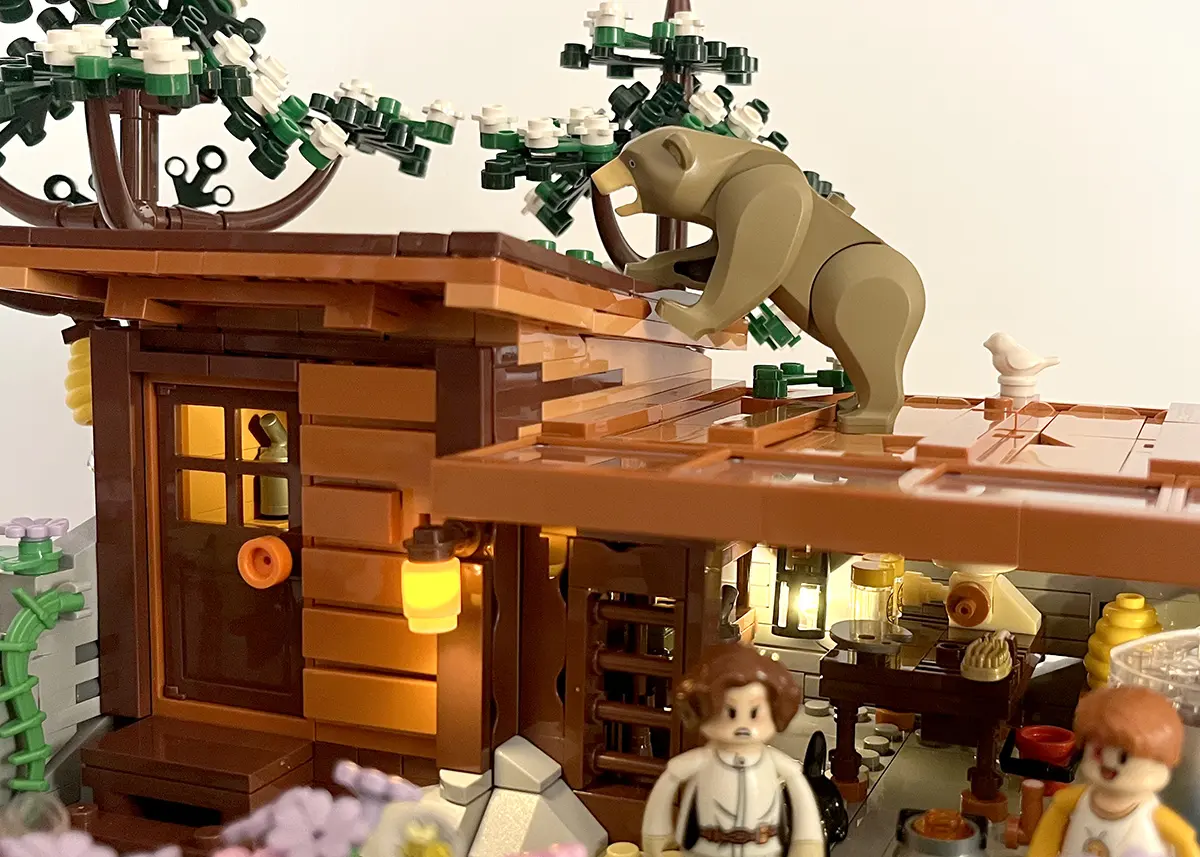
Final thoughts
FUNWHOLE has a lot to learn, a lot to improve, without a doubt. Still, considering they were founded in 2014, I think it’s a pretty great brand. Sure, most of the part designs don’t belong to them – most, not all. Special parts they’ve designed exist and can be found in sets. They might have skipped a lot of steps by using already tested parts, sure, but they saw the demand of AFOLs and designed accordingly, which is also a plus. I don’t know about the other sets, but mine has “This is not a toy” written on the box. The other alternative brands I’ve come across don’t care about that. Most of them feel like “Let’s make a cheap toy to give to the kids” – and compromise the overall quality.
Everyone knows the saying of the LEGO company, right? “Only the best is good enough”. It feels like FUNWHOLE adopted this philosophy, made it their principle. Like I said, it’s a new company and there’s room for improvement. Still, it’s a nice alternative to LEGO, who dominates the market, and they’re good enough to compete with them. I hope they continue their journey and we continue to see their lovely sets.
See you in the next one!
The image of Beekepers House and Flower Garden is from Jays Brick Blog. The rest are mine.
Some girls play with Barbie dolls, while others create small worlds with LEGO minifigures and continue to do so when they grow up. You can probably guess which group I belong to :)
